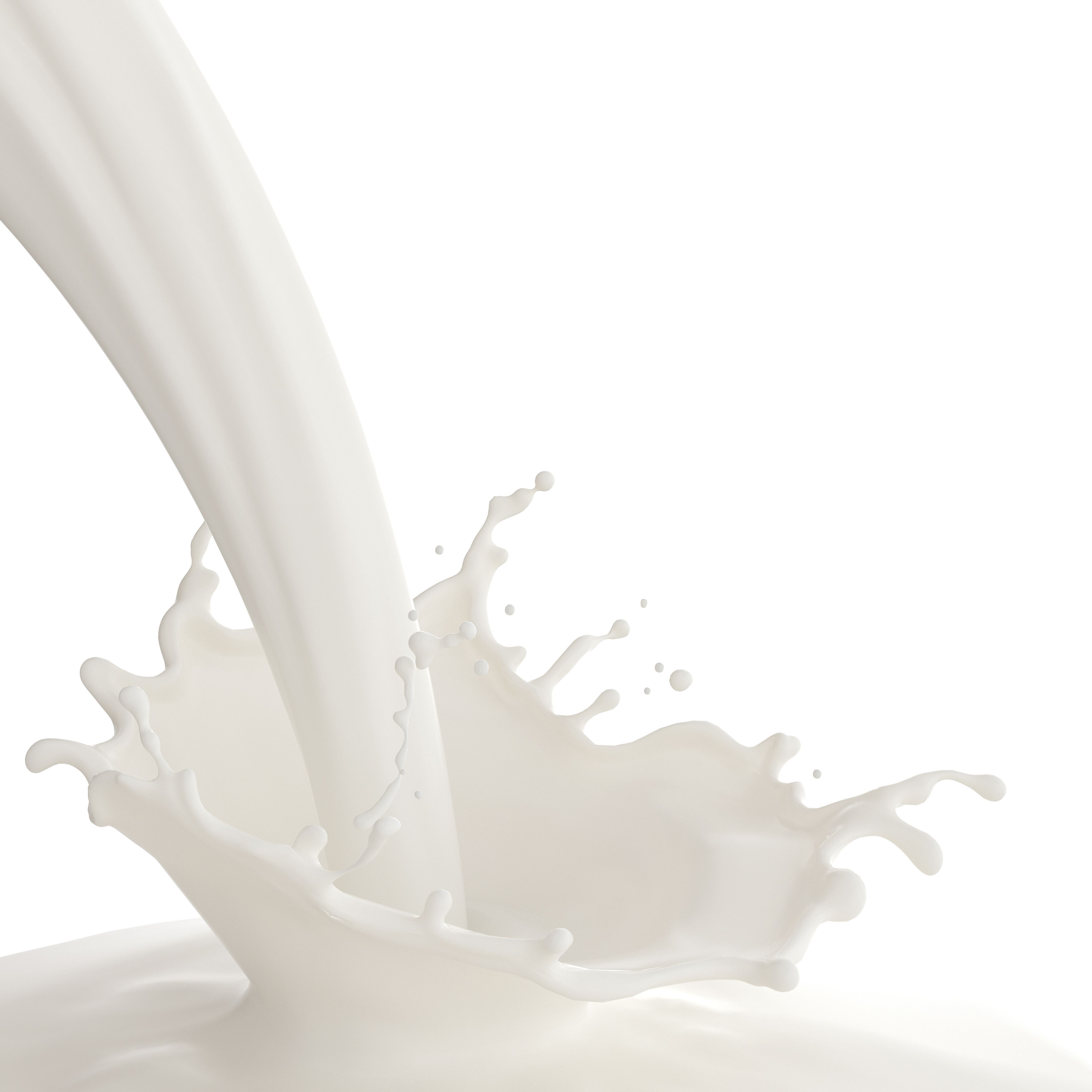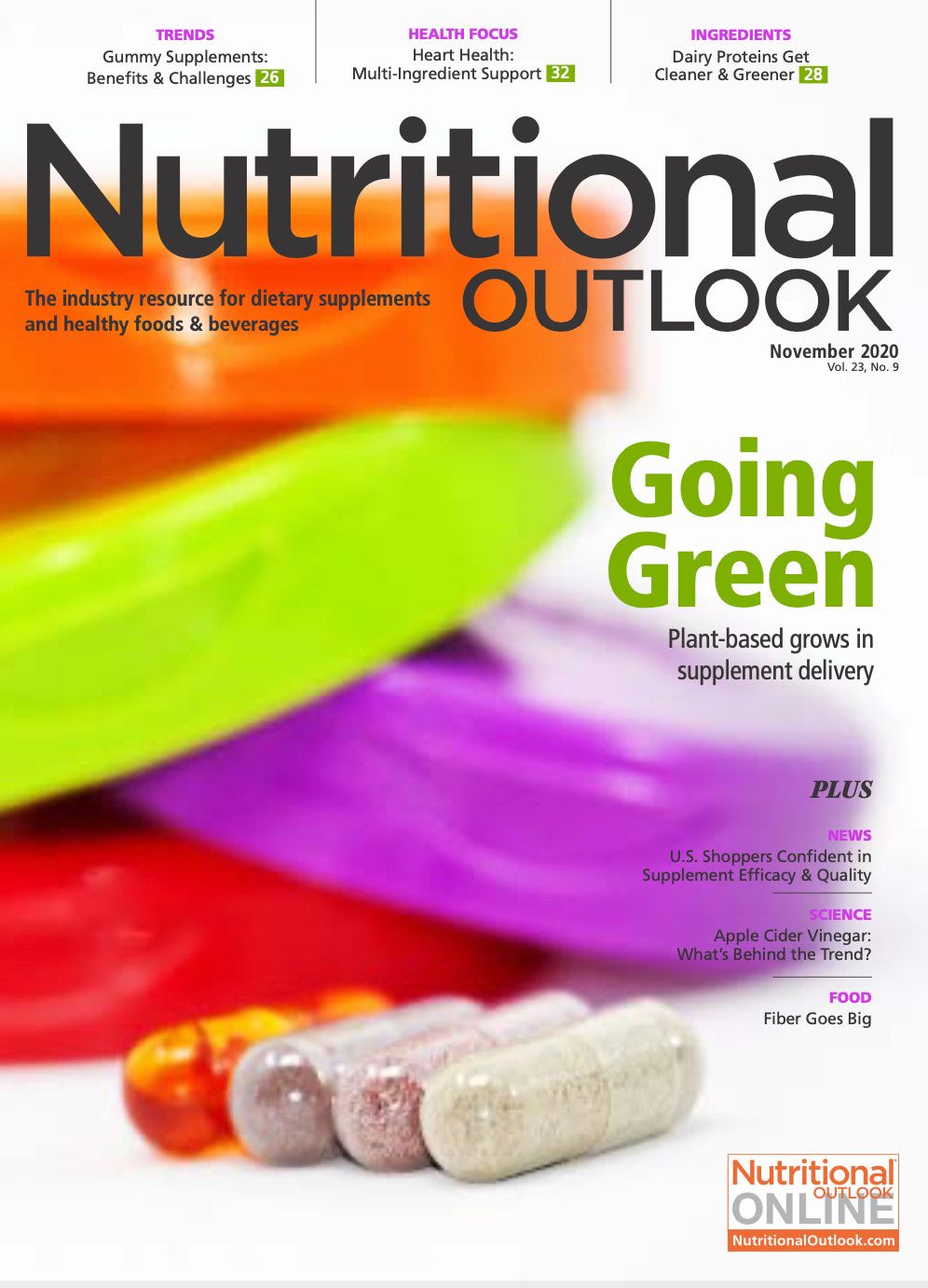Dairy proteins still tell a good-news story
Plant proteins may allure consumers with their clean and green attributes, but dairy proteins are increasingly competing on this front, in addition to offering their own undeniable health and formulating benefits.
Photo credit © Anusorn - Stock.adobe.com

If it seems as though plant-based proteins have been the big story lately, that’s because they are a big story. New data from Meticulous Research1 predicts that the global plant-protein market will ride an 8.1% CAGR upward from 2019 through 2025, ultimately reaching a whopping $14.32 billion in value.
And the drivers behind that growth are, by now, no secret: Consumers increasingly view plant-based proteins as cleaner, greener, kinder, and, in some cases, even healthier choices. At a time when demand for protein is on the uptick in general, those are handy qualities to have.
But plant protein isn’t alone in having them. In fact, dairy proteins can go toe-to-toe with their plant-based brethren on all those counts. And according to category watchers, there’s room enough in the protein pool for all.
Plant Only a Portion
Vicky Davies, global marketing director, performance and active nutrition, FrieslandCampina Ingredients (Amersfoort, The Netherlands), is one such category watcher, and her reading of the trends tells her that plant-based is only part of the story.
“Our research shows that while the growth of veganism is grabbing headlines, more young people are choosing a flexitarian diet that lets them combine dairy and plant-based protein sources,” she says. “Plant-based is just one element of the protein picture, and we foresee this trend developing side-by-side with dairy-protein innovation.”
So does Billie Shaffer, senior director, product management, Glanbia Nutritionals (Chicago), adding that plant-based “still represents a small portion of the market and a small proportion of consumer preference for protein sources. Data suggest that dairy-based proteins are still preferred by most consumers.”
Dairy’s Halo Healthier than Ever
Some would even argue that dairy’s healthy halo has never shined brighter, thanks to the widespread attention that the COVID-19 pandemic has focused on the links between wellness and diet.
Notes Lindsey Ormond, RNutr, director of nutrition and research, Milk Specialties Global (Eden Prairie, MN), “The message we continue to see is that COVID has led to an increase in dairy consumption in the U.S.”
For one, dairy protein’s quality—its ability to meet the body’s needs as reflected in its amino acid composition and digestibility—is virtually unrivaled, based on such broadly used quality measures as the protein-digestibility corrected amino acid score (PDCAAS), digestible indispensable amino acid score (DIAAS), and protein-efficiency ratio (PER).
Even better, Ormond adds, “The market demand we’ve seen has shifted to new channels and ways of using dairy proteins to support health benefits like immunity.”
Indeed, immunity’s pandemic-driven popularity has increased interest in bioactive whey-protein fractions like lactoferrin and immunoglobulins, which, Ormond says, can protect against pathogens and favorably modulate gut bacteria. And the gut, she notes, “is a key part of our body’s defense system.”
Further, stress relief and relaxation—two more COVID-related wellness concerns—can improve with help from whey-protein fractions. To wit, the fraction alpha-lactalbumin is naturally rich in the amino acid tryptophan, which influences the brain’s production of serotonin. Serotonin, in turn, “influences mood and plays a key part in the sleep-wake cycle,” Ormond says.
Whey to Go, Team
Bioactive whey fractions’ potential is a tantalizing prospect for dairy promoters. But as the industry awaits further research, it can celebrate dairy proteins’ already-established benefits, not least of which are those related to sports performance.
“The sports-performance and active-lifestyle segments continue to drive demand for proteins from milk,” Shaffer says, with whey protein being the marquee ingredient in formulation.
Whey protein’s fast, easy digestibility and “unrivaled amino acid profile”—including its rich supply of muscle-building branched-chain amino acids—produce downstream benefits that range from improved endurance and weight control to reduced post-exercise fatigue and better sleep and stress management, Ormond says. Even better, because whey proteins are so nutritionally high-quality, smaller servings can deliver superior results relative to similar servings of lower-quality proteins.
In addition to whey, casein and milk proteins also bring value to sports nutrition, thanks to similarly impressive amino acid profiles, as well as their neutral flavor and excellent stability in beverages.
And because the body absorbs the amino acids in casein and milk more slowly than it does those in whey, product developers are exploring formulation opportunities in targeted sports-nutrition formulations—think overnight-recovery applications.
“Another interesting development,” Davies adds, “is the possibility of combining whey protein and casein for endurance, rather than choosing between them.” Studies show that such blends not only yield a rapid peak in blood amino acid concentrations—similar to whey—but, importantly, sustain high amino acid concentrations later.
“This indicates that whey-plus-casein blends could stimulate improved muscle-protein synthesis,” Davies explains, “benefitting muscle mass, strength, and function—although more research in this area is needed.”
Mainstreaming Milk
As that research progresses, a broader, and not-necessarily-so-sporty, cohort of consumers is discovering dairy proteins’ benefits, and mainstreaming the sector in the process.
“We’re definitely seeing increased demand for dairy proteins from mainstream consumers,” Shaffer says.
Ormond agrees. “Today’s consumers have changed the protein game tremendously,” she says, driving product innovations beyond the formats, flavors, and textures long popular with traditional users. “A great example is the evolution of the protein-bar market, where we see new textures and inclusions, moderate proteins levels, and alternative flavor profiles.”
Clear beverages—including sparkling RTDs, still waters, and clear ready-to-mix options—offer another evolutionary landscape, thanks to novel dairy-protein ingredients that mix into formulations with crystal clarity.
Notes Barbara Jensen, business development manager, Arla Foods Ingredients (Basking Ridge, NJ), “Many examples of creativity and innovation are emerging in the dairy-protein space,” with launches of dairy drinking yogurts and fermented drinks with a protein positioning growing globally at a 34% CAGR between 2015 and 2019, according to figures from the Innova Market Insights market research database, she says. Such applications now represent 17% of new product launches in the category.
Ormond’s even noticed consumers using protein powders in everyday cooking—from pancake mixes and banana breads to desserts and homemade smoothies. “As their knowledge of protein functions increases,” she predicts, “consumers will use dairy protein to enhance foods’ taste and texture, in addition to getting the renowned health benefits.”
Improving Ingredients
Of course, using dairy protein to enhance foods’ taste and texture is what product developers have been doing for years. And the extent to which they can do so testifies to the protein-ingredient improvements that processors continue to make.
“There’s been a lot of innovation in dairy proteins in key areas critical to food marketers, product developers, and consumers,” Shaffer says. “Protein manufacturers are always seeking new ways to innovate and solve specific processing, textural, shelf life, and flavor issues.”
Fortunately, dairy proteins have a reputation for delivering appealing textures and a clean flavor compared to alternative proteins. “They’re soluble across a wide pH range, too,” Shaffer says, “making them great choices for ease in formulating. And many milk proteins can be further tailored and functionalized to, for example, withstand certain processing conditions and provide stability over a product’s shelf life.”
Clean and Green
Adds Ormond, “We’ve also seen improved methods for creating clean-label, UHT dairy-protein beverages that reduce the need for buffering salts and stabilizers, making the finished product appealing to label-conscious consumers.”
And that’s no small matter, as “clean” credentials are an increasingly key factor in consumers’ protein purchase decisions.
Noting the “growing demand for dairy products with a healthy and ‘natural’ position,” Jensen points to Arla Foods Ingredients’ organic MicelPure micellar casein isolate (MCI)—launched this year—as not only the company’s first organic product, but the first organic MCI on the market, she says.
Yet the notion of “clean” is expanding beyond labeling, Davies says, and “Unless clean-label values are embraced holistically, all food industries will become unsustainable.”
“This is important,” she continues, “because we know that agriculture is responsible for 24% of global greenhouse gas emissions, and that dairy accounts for just over one-tenth of that. But the reality is that all protein sources have an impact on the environment.”
Shaffer agrees, adding that a “gray area” clouds ingredient sustainability stories, with some consumers assuming that plant proteins are universally more environmentally sustainable than dairy. “But when one looks at the total supply chain,” she says, “those assumptions may not be the case.”
Why? Because the dairy industry “is making great strides in sustainability, from farm to factory,” she says.
On the farm, environmental stewardship, carbon-neutrality plans, optimized water use, and improved water quality are all common efforts. “And factories are making continuous improvements in preserving energy, recycling, and reducing water use,” Shaffer says. “Some dairy processors have established extensive sustainability programs, including transparency and traceability to the farm level, not to mention pasture-fed and organic offerings.”
FrieslandCampina’s been working with farmers and customers for 20 years to optimize water management, install solar panel and windmills, and “simply leave cows in the meadow longer,” Davies says. The payoff: The company realized the largest greenhouse-gas reduction of any dairy firm over the past five years, she says. “And there’s still a lot of work to do.”
As far as dairy proteins themselves are concerned, Ormond notes that because whey is a byproduct of cheese production, “We’re already turning something that might otherwise be wasted into highly nourishing ingredients.”
Jensen agrees. “The whole concept of whey as an ingredient is based on a circular philosophy of creating value from a byproduct,” she says. And even compared to plant proteins, you can’t get much greener than that.
Reference
- Meticulous Research report. “Plant Based Protein Market by Type (Soy Protein, Wheat Protein, Pea Protein, Potato Protein, Rice Protein, Corn Protein) and Application (Foods and Beverage, Animal Feed, Nutrition and Health Supplements, Pharmaceuticals) - Global Forecast to 2025.” September 2020.

Prinova acquires Aplinova to further increase its footprint in Latin America
April 7th 2025Prinova has recently announced the acquisition of Brazilian ingredients distributor Aplinova, which is a provider of specialty ingredients for a range of market segments that include food, beverage, supplements, and personal care.




















